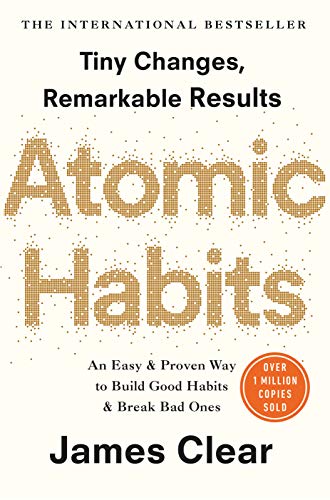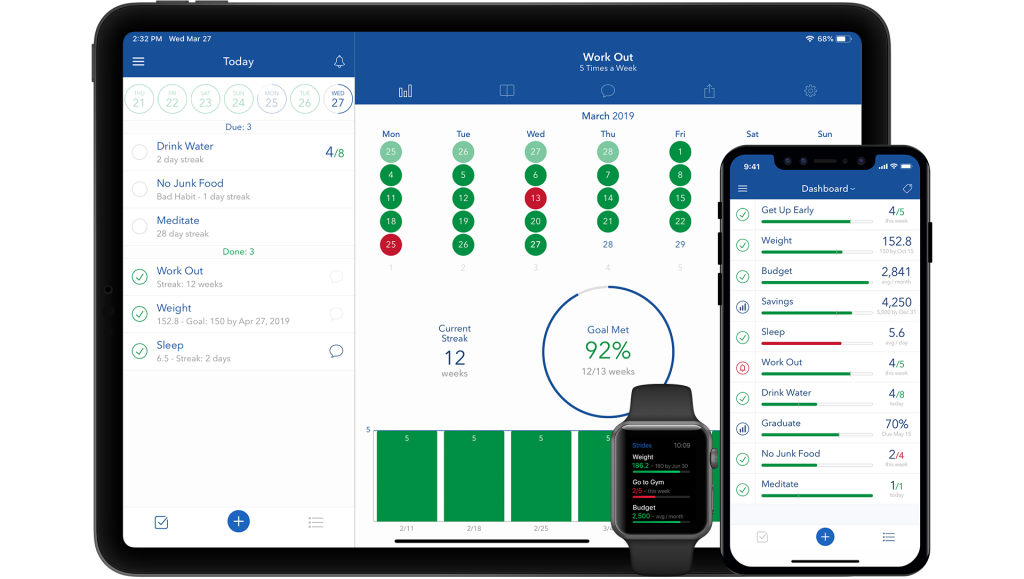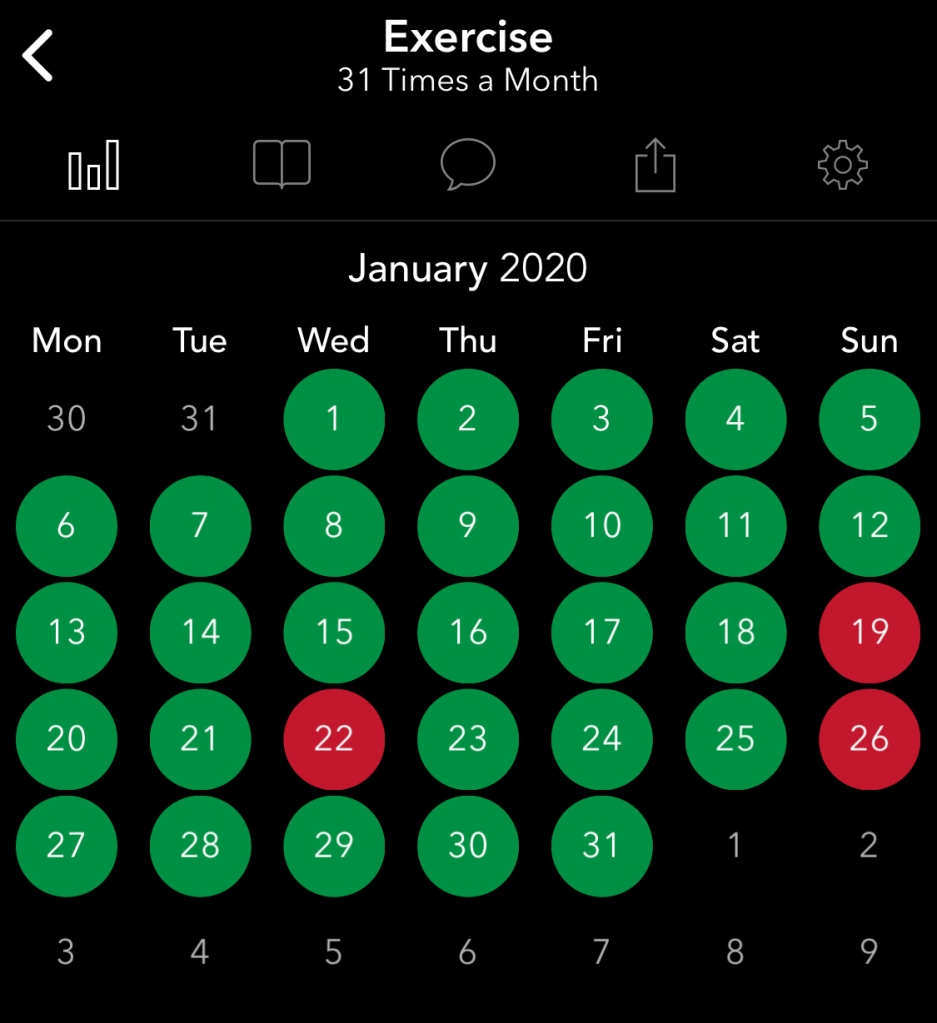5 practical strategies to make good habits successfully
If you are someone who is looking to achieve your goals by developing good habits, I have listed out some of the techniques I use to stick to new habits that I am trying to implement.
In January 2020, I decided to challenge myself to 31 days of rowing. My motivation to do this was:
- To be healthier
- To see if I could stick to it
- To use the rowing machine that I have at home.
Previous times I tried to stick to this habit, I managed a week before giving up.
The reasons why I gave up were:
- The temptation of extra 30 minutes in the bed was too tempting
- Distractions in the morning which disrupted my routine
- I kept renegotiating with myself. Saying I will do it later on the day or start again tomorrow but never did.
To improve my chance of sticking to the habit, I read Atomic Habits by James Clear.
James Clear provided advice on a 4-step habit technique, on making habits easier and how tracking habits helps improve your ability to stick to it. I took all that advice, and this is what I learnt.

I took all that advice, and this is what I learnt.
The Habit Loop
James Clear broke down habit forming into 4 step process: Cue, Craving, Response and Reward.
The cue step is the trigger that starts the habit. For rowing, I incorporated it as part of the morning routine. So when I wake up the first thing I think of is getting changed and working out.
Next step is craving. Craving is the motivation behind every habit. When I wake up in the morning, what is the reason to make me row? The reasons I have come up with are:
- I feel good for the rest of the day. This gives me energy for the workday ahead.
- I feel healthier long term. This will benefit my family and me.
- I have successfully completed a task for the day. This will kick start my productive mindset.
The third step is the response. The response is the doing of the habit. James Clear believes if there is too much friction in making the habit than you won't do it. To reduce the friction of doing 20 minutes of rowing every day, I did the following:
- I had my gym clothes ready to wear when I wake up. So all I had to do was put it on rather than looking for it.
- I have a bottle of water available to drink when I wake up and after the workout. This stops me from not working out because I am thirsty.
- I had my AirPods nearby with my music list ready to be played. This helps me to get motivated to exercise.
The final step is the reward. In this step, you should reward yourself for completing the habit.
My favourite prize would be to have a doughnut, but that is counteractive to the habit I am trying to form so I wanted to do something that would incentivise me and bring me immediate gratification.
At developgoodhabits.com website, they have provided a list of 155 rewards to choose.
In the end, I opted for a £3 deposit for my fun fund. Each time I complete a habit, I put £3 aside to buy any gadgets, games and books I wanted. If I completed the 31-day challenge, I would have £93 to spend on anything I wanted!
The reward stage could also be a trigger for another habit cue and therefore restarting the loop, which is useful for habit stacking which I will talk about later.
Habit Tracking

James Clear believes that if you can track your habit, the more likely you will stick to it. The reasons for this is it reminds you to complete your habit, and it motivates you to continue.
He proposed the best way to this is as part of a journal. I do not journal every day, so I decided to use an app.
The best app I found was one call Strides. The features I like about Strides are:
- It has a simple user interface to help see my progress
- It has templates to help set up different types of habits with different ways to track them.
- It captures notes on why you couldn't complete the habit. Keeping records proved useful when trying to stop incomplete habit days.
By using strides every day, it helped motivate me to continue the challenge and ensure I don't break the chain of completed days.
Routines
The reality of life means waking up, and rowing are not the only two things I have to do that day. I have to get clean, get dressed, have breakfast and get out of the house in time for work.
So I needed to make sure rowing was part of my morning routine.
I have found using the Seconds app lets me list out the tasks I have to do in the morning and tells me what the next task should be.
The app is primarily for HITT training. But I found it useful for managing my morning and evening routines.
Listing out my morning tasks has proved useful in three ways:
- In the morning, I am half asleep, and *fail to remember* what the morning routine tasks I have complete. So having something tell you makes life easier.
- By following the routine, I *avoid being distracted* by other activities such as reading social media or watching youtube.
- Setting a timer to tasks ensures I am sticking to the routine, and I have plenty of time to leave the house to get to work on time.
- Having a good routine made sure that I was able to incorporate rowing into the mornings without having an excuse that I did not have enough time to do it.
Habit stacking
To create a good routine, it is a good idea to stack it with other positive habits that you are already doing. Habit stacking suggests linking habits together will compound the benefit you get from it and acts as cue between habits.
So when I wake up in the morning, the first thing I do is drink a glass of water. This act as a cue to get changed and row which acted as a cue to have breakfast.
By linking the rowing to an existing habit, it was easier to incorporate rowing into my morning routine.
Other things I have learnt from Habit stacking include
- It works well when you add one habit at a time and do it for a few weeks successfully before adding another.
- It works well if you tied it to a habit that you do regularly.
- It works well on small habits, so breaking down large habits into smaller repeatable tasks would make habit stacking more likely.
2-minute rule & 2-day rule
Now I had a plan, tracker and a morning routine. So it's time to execute. As usual, I have a good start; the first few days are easy because I am highly motivated and full of energy.
But after a few days of waking up early when the weather is cold outside, it was a struggle. Staying in bed was tempting.
So I applied two rules from Matt D’Avella, a popular productivity YouTuber.
His first rule was the 2-minute rule. He believes if you tell yourself to do the exercise for just two minutes; once you complete the two minutes, you find yourself drawn into doing more. You have already done the hard bit which was waking up and getting changed and sitting on a rowing machine.
The second rule was the 2-day rule. Matt explains sometimes we screw up. Sometimes life doesn't know about our goals, challenges and habits. When things don't go to plan, accept it and don't beat yourself about it.
If you miss one day of exercise, make sure you don't miss two. Commit yourself to make sure you do it the next day.
Accountability
Another method I used was accountability. I told everyone about the challenge.
The benefit of telling people about the challenge was:
- made the challenge more real. It is not something in my head
- When I meet friends and family, they ask me how I was doing in my challenge. I didn't want to say I gave up.
- It also helped validate the challenge before I tell people. Some questions I ask myself are.
- Is the challenge even possible?
- Is it actionable?
- Is it clear and concise that I can explain it to someone?
- Is it time-bound?
If I am able to answer these questions, I am more likely to be successful.
Summary
Using all these techniques and tools helped me achieve 28 days for rowing out of the 31 days in January.

I did this by:
- having a plan of implementing the habit using James Clear habit loop
- I tracked the progress using strides app to ensure I can see how well I am doing and motivate myself to continue.
- I used Seconds app and habit stacking to create a morning routine that I knew would work
- I used the 2-minute rule to keep going when I wanted to stay in bed and 2-day rule to keep going when I missed a day.
- I used accountability to ensure people knew what my challenge and get me to stick to it.